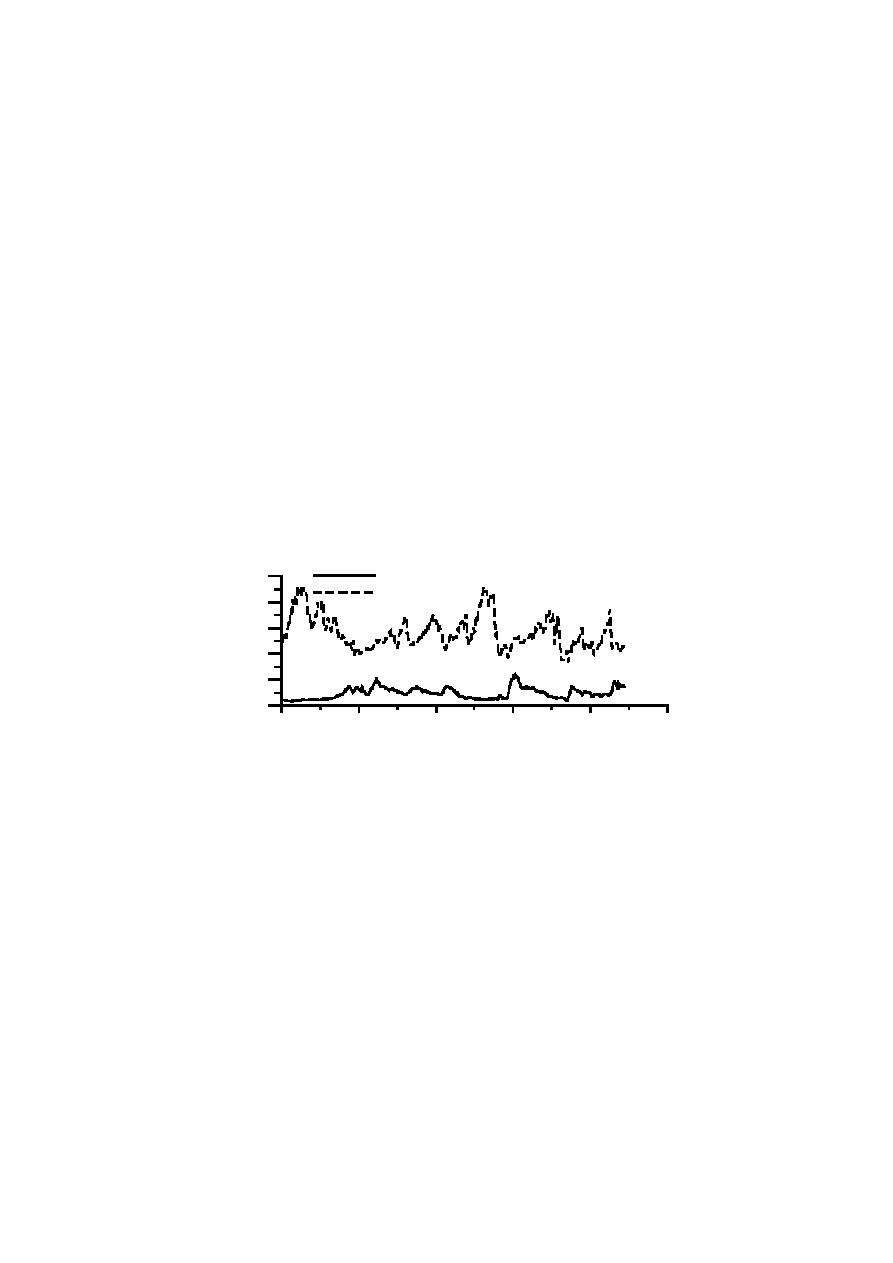8
Ten-month simulations were made, from February through November
2000, using local wave (NOAA Buoy 41008) and tidal currents from a regional
ADCIRC simulation (Johnston et al. 2002). Figures 6 and 7 show the first
simulation. The horizontal current pattern is dominated by an approximate
20 cm/s longshore tidal current. The cross-shore tidal current ranges between 5
and 10 cm/s. Non-tidal currents are apparent, but are much smaller. Flow
boundary conditions for the alongshore component were developed by adjusting
adjusted such that the depth-averaged alongshore speed as shown in Figure 6
was reproduced. The cross-shore boundary condition was developed by
imposing an oscillatory head along the offshore boundary. The amplitude of the
water elevation was adjusted so that the cross-shore speed shown in Figure 6
was reproduced in the domain interior. Average wave heights are in the range
of 1 m, and periods of about 6 s. Wave heights approach 2 m at times.
Wave Height (m)
10
Wave Period (s)
8
6
4
2
0
2/1/00
2/8/00
2/15/00
2/21/00
2/28/00
3/6/00
Figure 7. Example wave data input to the M3D simulation.
The three plots in Figure 8 show the initial and final cross-section for the
10-month simulations compared to survey measurements. M3D correctly
reproduced the shoal volumes and the offshore volume variations. Most of the
increase in shoaling from station 180 to 299 was explained by a change in grains
size characteristics (settling velocity and critical erosion stress). The same grain
size characteristics were used for simulating transport at station 299 and 340,
and the decrease in shoal volume at station 340 was primarily due to decreased
bottom stress and the smaller channel depth. The smaller channel depth reduces
the contrast between ambient bed and channel bottom hydrodynamic forcing
and, subsequently, the smaller transport gradient yields a lower shoaling rate. In
the three simulations, the hydrodynamic forcing was nearly symmetric (tidal);
therefore, no channel migration occurred.






